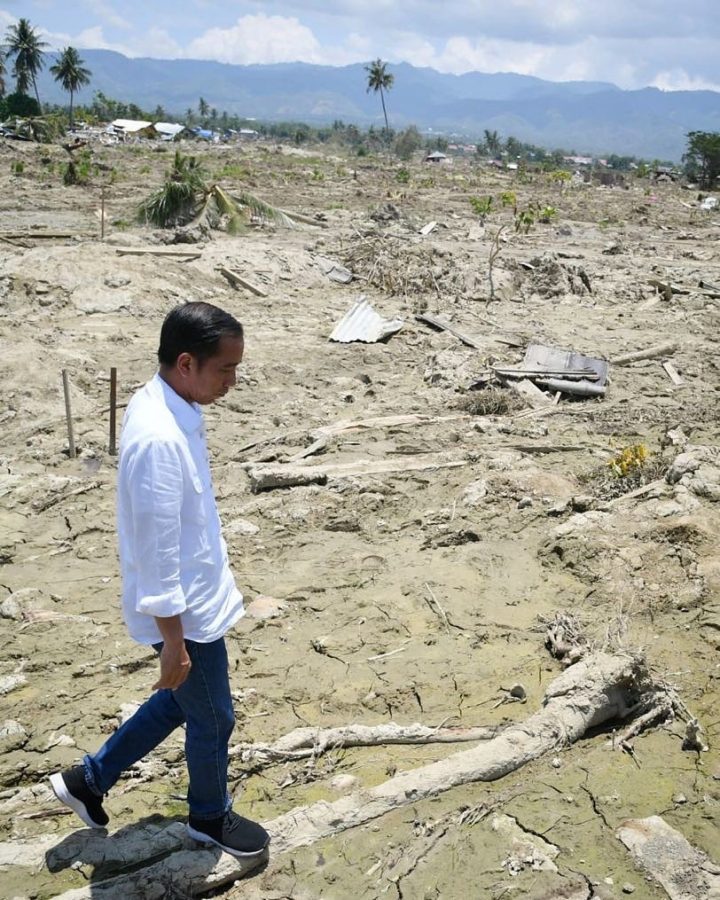Double disaster strikes Indonesia
The President of Indonesia, Joko Widodo, walks around the city of Palu. The previously lively city has been demolished to sandy earth by the 7.5 magnitude earthquake and 18-foot tsunami that slammed the area on September 28, 2018.
October 10, 2018
They say that lightning never strikes the same place twice; however, it most certainly did in the city of Palu, on the island of Sulawesi. At 18:03 local time on the 28 of September 2018, a devastating 7.5 magnitude earthquake rattled the Indonesian island Sulawesi, followed by a massive 18-foot tsunami that barreled towards Palu. Six years ago, the Indonesian government installed over 20 floating tsunami detection units. These technologically advanced buoys identify changes underwater that signal an incoming tsunami. The 21 floating tsunami detection units proved useless after having been damaged or stolen. An early warning was released following the earthquake, which predicted a tsunami of 1.6 to 9.8 feet and recommended that people evacuate. Unfortunately, the earthquake had destroyed the cellphone towers in the area, and the warning rendered useless. No sirens were in place along parts of the coast in Palu, diminishing the possibility of alerting the 600,000 inhabitants of the community to what was to come.
Eleven minutes after the earthquake shook the entire island of Sulawesi, three colossal tsunami waves slammed into the city of Palu. Immediately, the casualty rate coming from the twin natural disasters began to rise exponentially. Indonesia’s disaster agency has reported that the death toll from the earthquake and tsunami is currently at 1,763 and is expected to rise. No one has been found alive since the third day of search and rescue efforts, and 638 people remain officially missing. However, this number may be much higher, as the smaller cities surrounding Palu are inaccessible and without power. 2,549 people were injured in the earthquake and tsunami along with 70,821 displaced from their homes. Around 66,000 homes and other buildings were either damaged or destroyed when the natural disasters hit. Currently, 141 temporary camps are providing shelter. According to Environmental Science teacher Mr. Blough, “Having so little time between the earthquake and the tsunami, as well as the lack of preparation, amplified the amount of damage and the death toll that these twin disasters presented. Recovery efforts take time whenever natural tragedies occur, especially when a less economically developed country, such as Indonesia, is affected. These areas do not have access to the means for restoration required when such a catastrophe hits..” Efforts to aid the country with recovery and recuperation are currently underway in the island of Sulawesi.












